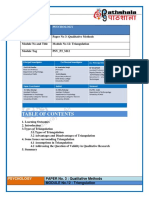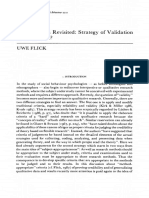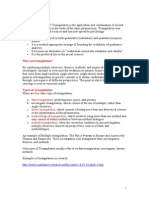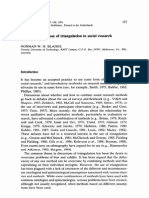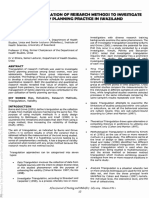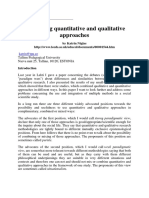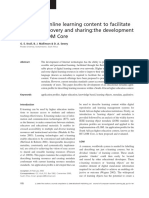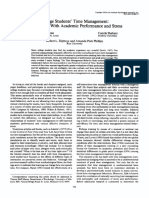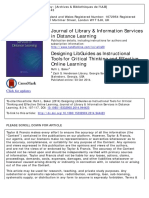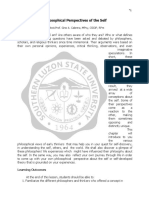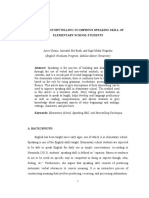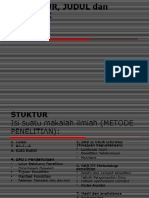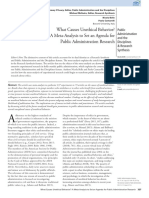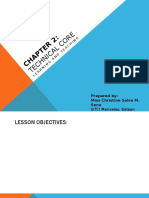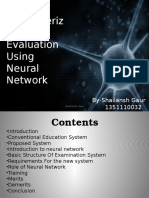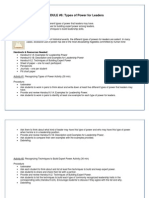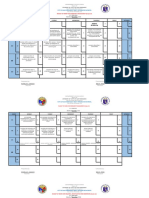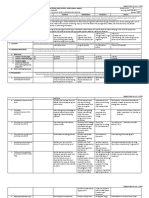Evidence Based Library and Information Practice 2014, 9.
Evidence Based Library and Information Practice
EBL 101
Research Methods: Triangulation
Virginia Wilson
Director, Centre for Evidence Based Library and Information Practice (C-EBLIP)
University Library
University of Saskatchewan
Saskatoon, Saskatchewan, Canada
Email: virginia.wilson@usask.ca
Received: 11 Feb. 2014 Accepted: 16 Feb. 2014
2014 Wilson. This is an Open Access article distributed under the terms of the Creative Commons-Attribution-
Noncommercial-Share Alike License 2.5 Canada (http://creativecommons.org/licenses/by-nc-sa/2.5/ca/), which
permits unrestricted use, distribution, and reproduction in any medium, provided the original work is properly
attributed, not used for commercial purposes, and, if transformed, the resulting work is redistributed under the
same or similar license to this one.
Triangulation refers to using more than one and the results of the research” (Flick,
particular approach when doing research in 2002, p. 226).
order to get richer, fuller data and/or to help 3. Theory triangulation: approaching the
confirm the results of the research. Denzin via data with multiple theories or
Flick (2002) points out four different types of perspectives in mind to “extend the
triangulation: possibilities for producing
knowledge” (Flick, 2002, p. 227).
1. Data triangulation: using different 4. Methodological triangulation: two
sources of data. This includes different subtypes are noted – within-method
times for data collection, difference and between-method. Using more
places from which to collect the data, than one method to gather data.
and different people who could be
involved in the research study. Flick Triangulation initially was undertaken as a
(2002) indicates that “the starting point way to increase the validity of research results.
is to purposively and systematically However, Flick (2002) states that
involve personas and study groups, “triangulation is less a strategy for validating
local and temporal settings in the results and procedures than an alternative to
study” (p. 226). validation which increases scope, depth and
2. Investigator triangulation: using consistency in methodological proceedings”
several people (or at least more than (p. 227). Triangulation can be used in
one) in the data gathering and data quantitative and qualitative research and it
analysis processes. This would be a even seems as though triangulation is just
“systematic comparison of different another term for mixed-methods research. The
researchers’ influences on the issue Journal of Mixed Methods Research has a special
74
� Evidence Based Library and Information Practice 2014, 9.1
issue devoted to analyzing and exploring the Resources:
various ways triangulation is used in mixed-
methods research, obviously differentiating O’Cathain, A., Murphy, E., & Nicholl,J. (2010).
the two terms. This topic was chosen for the Three techniques for integrating data
special issue “based on the claims made by in mixed methods studies. BMJ 341
many scholars in the field that triangulation doi:
provides a justification for the use of mixed http://dx.doi.org/10.1136/bmj.c4587
methods” (Mertens & Hesse-Biber, 2012, p. 76). (Published 17 September 2010).
Triangulation has been taken to task on a Denzin, N. K. (19708). Strategies of multiple
couple of occasions. Given the philosophical triangulation. In N. K. Denzin (Ed.),
and epistemological nature of the various The research act: A theoretical
positions taken regarding triangulation, it is introduction to sociological methods.
too complex to delve into in this relatively (pp.). Chicago, IL: Aldine.
brief column. In brief, triangulation has been
criticized for “subscribing to a naive realism
that implies that there can be a single References
definitive account of the social world” as well
as for assuming that “sets of data deriving Bryman, A. (2004). Triangulation and
from different research methods can be measurement. Retrieved 11 Feb. 20134
unambiguously compared and regarded as from
equivalent” (Bryman, 2004, p. 3). Despite http://www.referenceworld.com/sage/
possible controversies, triangulation in socialscience/triangulation.pdf
whatever form it takes (although the most
common is probably methodological Flick, U. (2002). An introduction to qualitative
triangulation), has become a staple in social research (2nd ed.). London: Sage
science research. Publications.
Examples of studies using triangulation: Mertens, D. M. & Hesse-Biber, S. (2012).
Triangulation and mixed methods
Wahl, D., Avery, B., & Henry, L. (2013). research: Provocative positions. Journal
Studying distance students: Methods, of Mixed Methods Research 6(2), 75-79.
findings, actions. Journal of Library & doi:10.1177/1558689812437100
Information Services in Distance Learning
7 (1-2), 183-209. doi:
10.1080/1533290X.2012.705656
Zuze, H. & Weideman, M. (2013). Keyword
stuffing and the big three search
engines. Online Information Review
37(2), 268-286. doi: 10.1108/OIR-11-
2011-0193
Bitso, C. & Fourie, I. (2012). An investigation of
information-seeking behaviour of
geography teachers for an information
service intervention: The case of
Lesotho. Information Research 17(4).
Retrieved 23 Feb. 2014 from
http://www.informationr.net/ir/17-
4/paper549.html#.Uwo1i-ZFDIU
75



